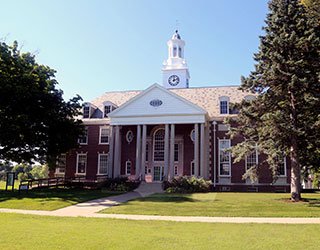Universities Are F*cked
COVID-19 accelerated what was already taking place.
First there was the shopping mall. Now there is the upper level education system.
At the core is overbuilding. Simply put, just like there is too much retail (mall) space in the United States, we see the same thing with college campuses.
COVID-19 is only pushing this situation to another level.
Today, two conferences, the PAC 12 and Big Ten cancelled their fall football seasons. This means the universities in these conferences are going to lose tens of millions of dollars each. The other 3 conferences in the Power 5 still have not declared their intention.
All told, according to Marketwatch, a cancelled football season will cost these 5 conferences over $4 billion.
Football money goes to fund the athletic departments of these major schools. The challenge is the fact that the expenses associated with the sport do not go away. For too long, all the money coming in went to stadium construction and coaching contracts. None of those are going away due to the pandemic.
The impact will be felt by the smaller schools. Many depend upon the revenue from the out of conference games to bring in millions. It is estimated this can fund up to 10% of the athletic department for these schools.
What really becomes an issue is the fact that, for these schools, athletics are not money makers. Instead, they serve to offer students experience and improved quality of student life. Failure to have the athletics means that attendance will drop.
This is the latest blow in a trend that was already established.

Source
In May, MacMurray College in Illinois announced its closure after 174 years in operation.
Sad as MacMurray’s fate is, it won’t be alone. More than a third of the 937 private universities examined by Edmit are in “low” financial health, meaning they will run out of money within six years. That’s twice as many “low” scores as a year ago.
Furthermore, the National Association of Independent Colleges and Universities has asked the Department of Education to stop publishing its report that identifies colleges at risk of bankruptcy, over fears the information will scare students away and hasten a school’s demise.
With college tuition costs going through the roof the last few decades, the party might be over. Online classes hold a lot of appeal to students not willing to take on the huge debt that goes with traditional schooling. While many schools jumped into the fray, students are not willing to shell out $50K per year for online classes.
Another major issue right now is the elimination of the foreign student. This category accounts for great margins since these students tend to pay full tuition. With travel internationally basically shot down, this revenue stream is wiped out. Far more serious is the fact that a student not showing up this Fall means he or she does not come at all. This crushes 4 years of revenue, not just one.
Shopping malls quickly became "ghost malls" as online shopping and eCommerce took over. We are faced with the prospect of "ghost campuses" as more classes end up online. We can see how COVID-19 is accelerating the entire process.
A central part of this discussion is the fact that the return on the money spent, for many students, simply is not there. Many get a college degree yet have to compete for entry level jobs. A lot of graduates end up working in retail and hospitality, two areas where no degree is required.
The top end institutions will be alright. They have large endowment funds which can pay for their operations for years to come. The second tier, however, lacks this ability. If students are leery of showing up on college campuses because of the pandemic, these colleges will feel the pain.
Of course, this will likely mean layoffs, both in Athletic Departments and across the rest of the employment pool. This will affect unemployment at a time when the country can ill afford it. At the same time, many small towns are dependent upon the money brought in by the students (and their parents) to support local businesses. The fallout from this could remove the employment impact from hundreds of thousands into millions.
At the end of the day, many American universities are going down the tube. We are going to see more institutions shutting their doors for good next Spring. This is an outcome that cannot be avoided.
The headwinds were already strong. Now they are turning into hurricane force winds.
If you found this article informative, please give an upvote and rehive.

gif by @doze

Posted Using LeoFinance
This is ok.
This means that more students will stay local and attend community colleges which offer a great education. This means less student loans, and young adults living with their families longer.
If when my oldest turns university-age, she decides to attend a local community college and live at home, we will save about $50,000 per year, this would be great for the whole families long term wealth.
Posted Using LeoFinance
Depending upon how old your oldest is, there could be an entirely new, online educational system in place.
Posted Using LeoFinance
Wow, I had no idea university level football generates this much revenue! When you say football in the US, it means rugby, right?
Posted Using LeoFinance
Yes that is what we are referring to. Over here, we call what you refer to as football soccer.
Posted Using LeoFinance
Indeed the universities built during the years an entire economy around them and now they are left with many income sources to elevate the teaching process.
Everything changes nowadays and also them need to adapt and come with new ideas and measures to combat social distancing.
Posted Using LeoFinance